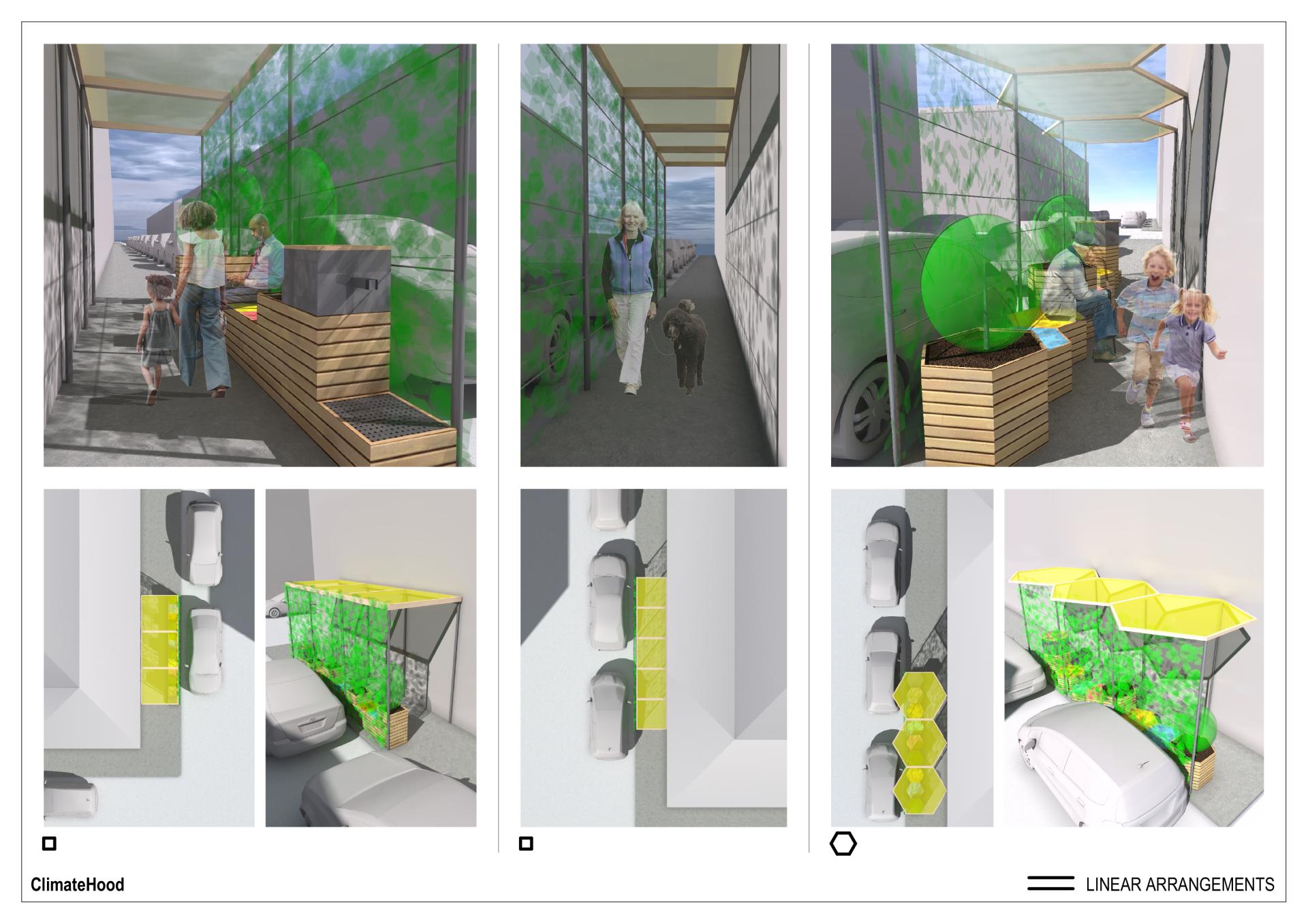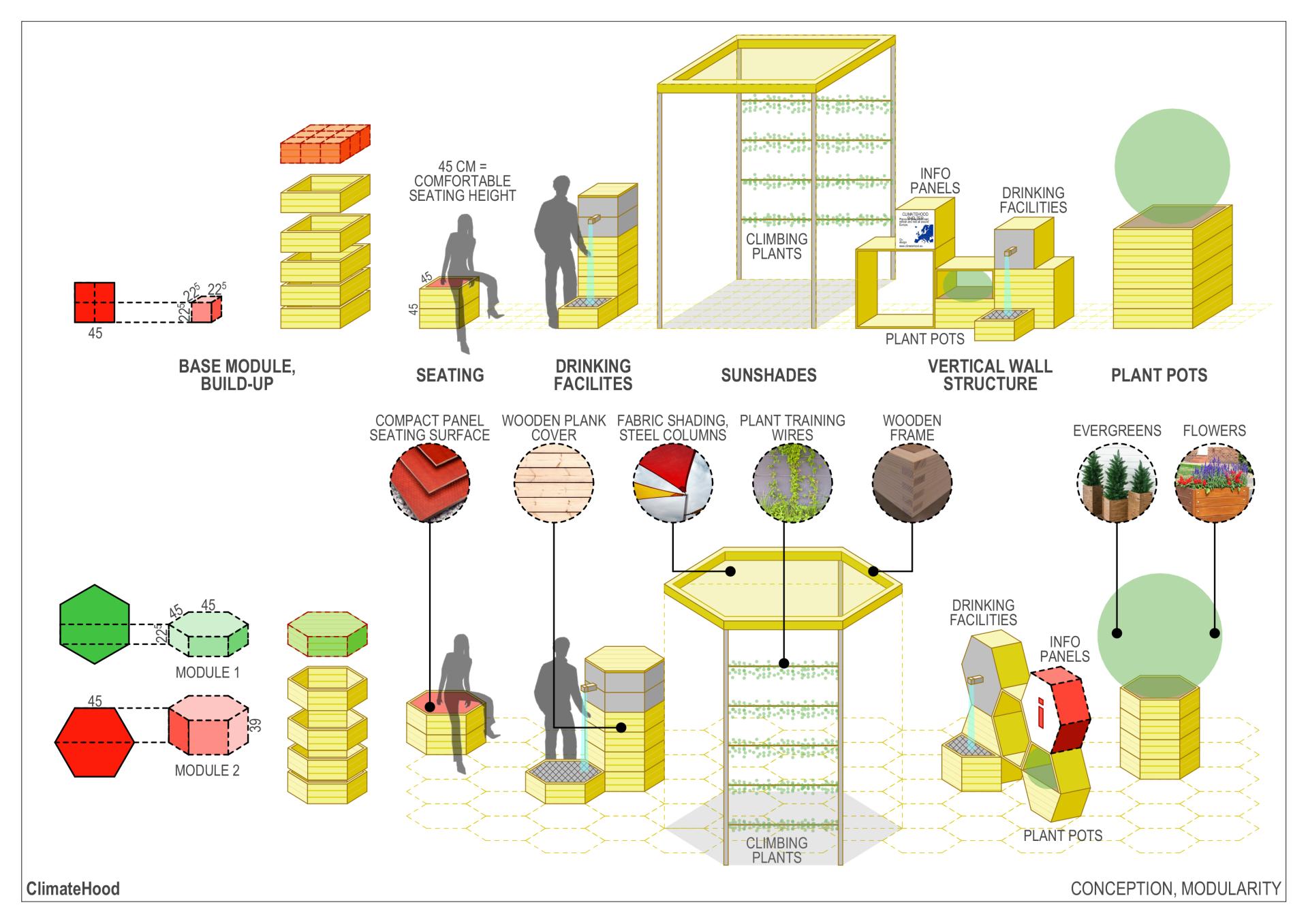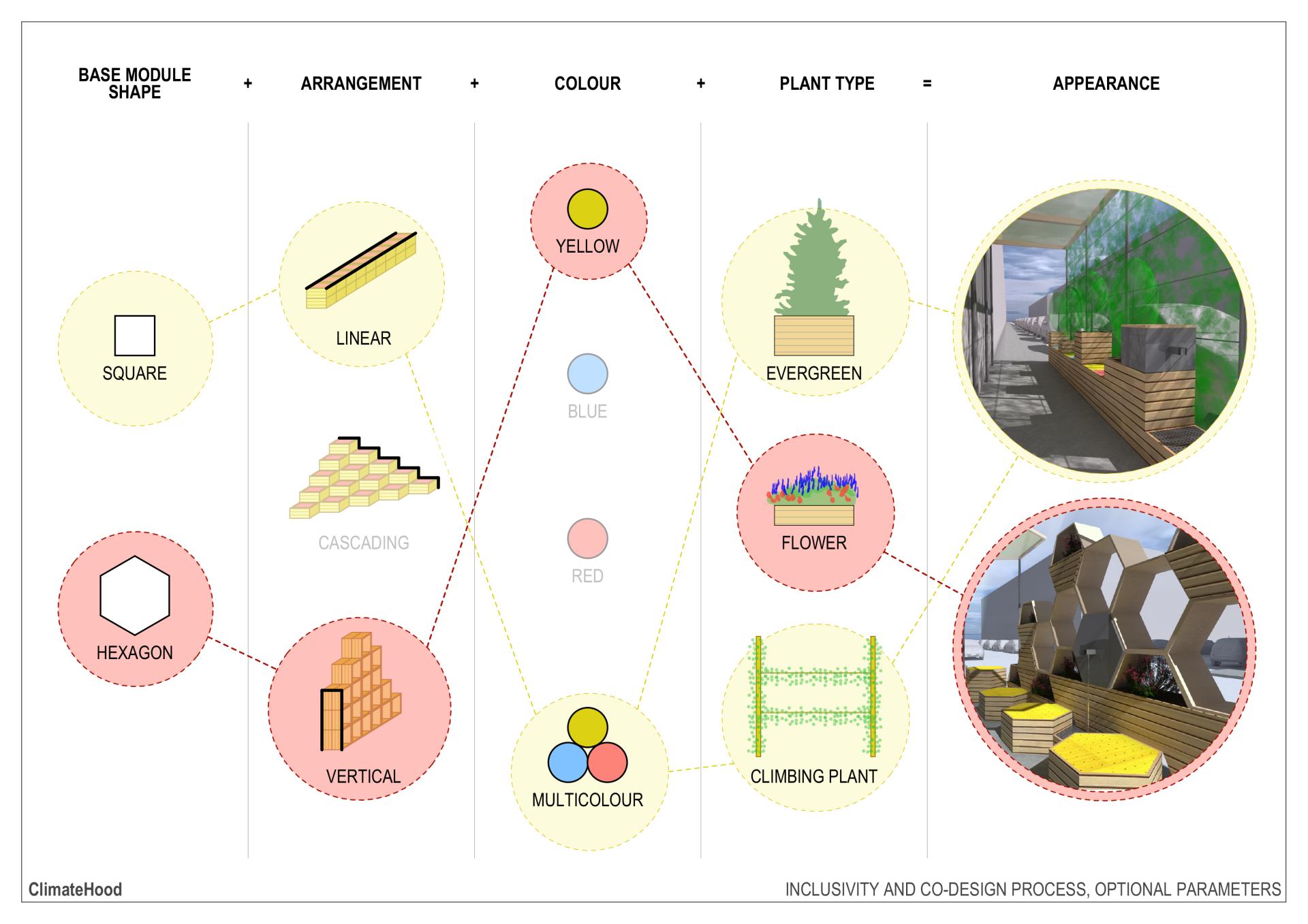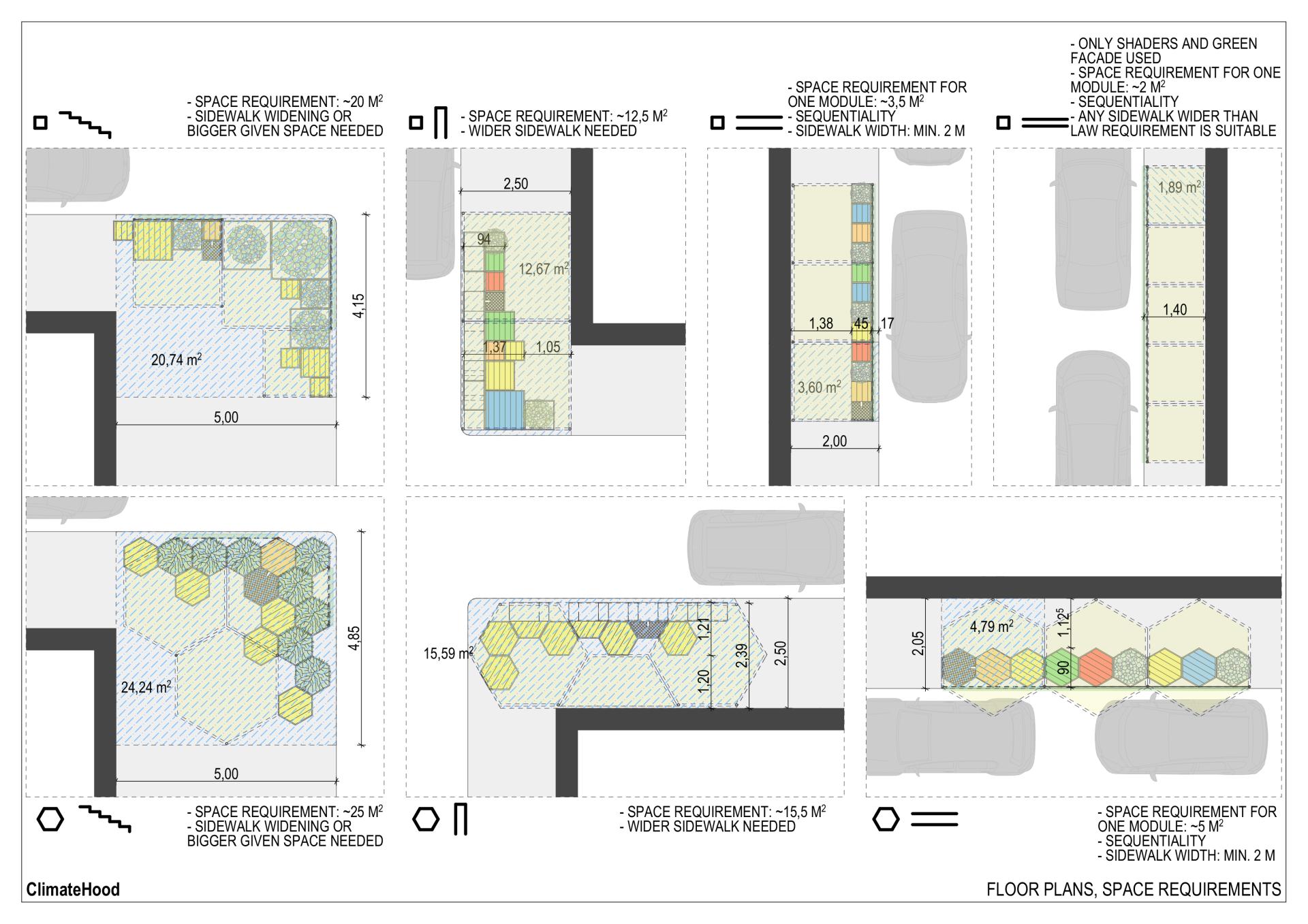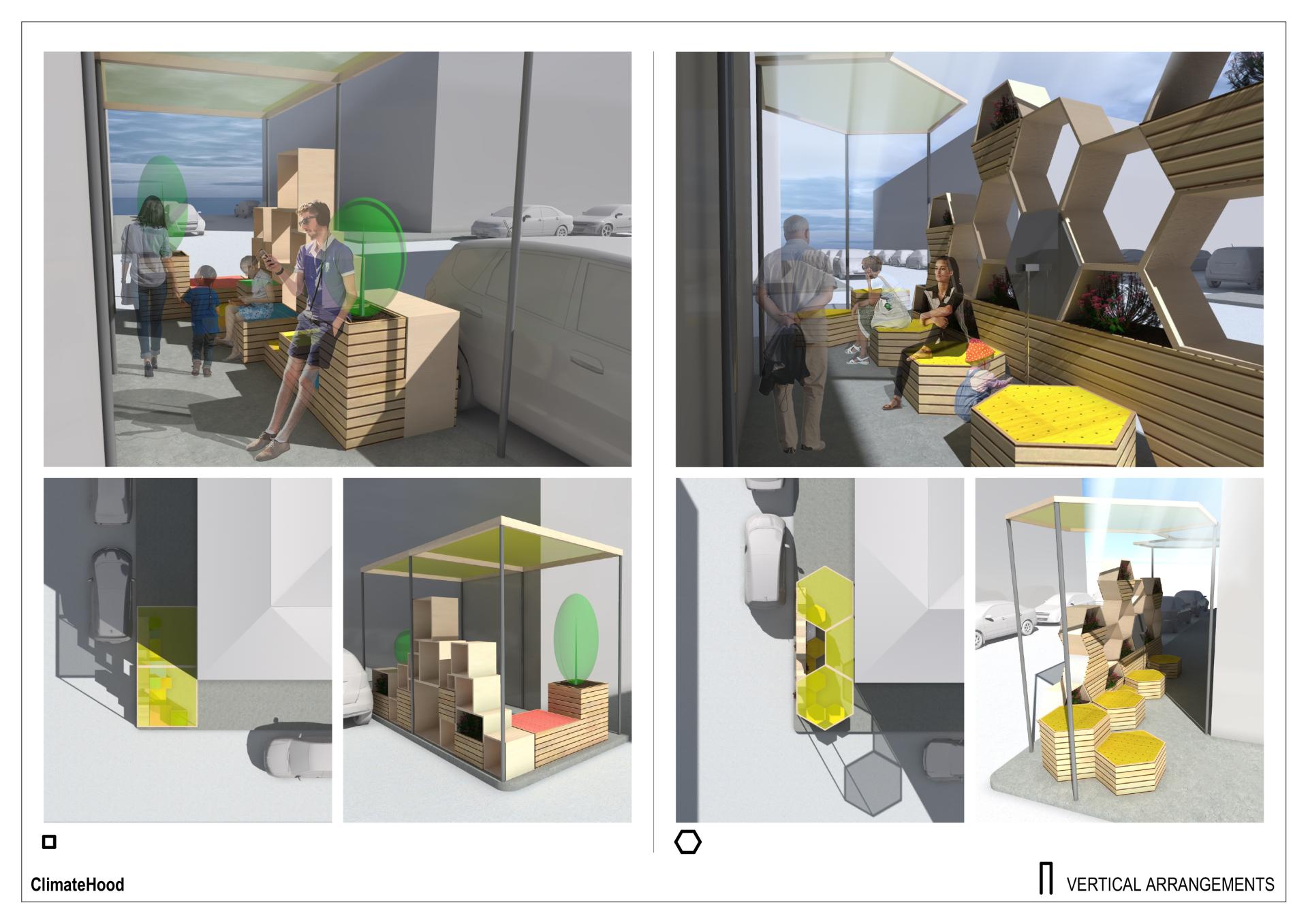CoolCo’s - Cooling Corners & Corridors
Basic information
Project Title
Full project title
Category
Project Description
CoolCo’s Cooling Corners and Corridors are small modular structures made from wood, fabric and steel to contain various plants and flowers. They are designed to reduce the impact of heat waves in urban areas, particularly densely populated neighbourhoods with low heat resilience. Their shape and size can be adjusted to fit strategic locations, sidewalks or walls for instance, where they provide refreshing “islands” of greenery to shelter inhabitants from the heat and improve air quality.
Geographical Scope
Project Region
Urban or rural issues
Physical or other transformations
EU Programme or fund
Which funds
Description of the project
Summary
Our concept targets two main challenges of cities in the 21st century: Increasing climate change impacts and social inequality. We confront the threat of more frequent and severe heat waves by combining systemic adaptation and mitigation measures at the urban scale within existing infrastructure. Meanwhile, our approach is based upon community engagement and co-design, empowering disadvantaged groups to regain the transformative potential of their neighbourhoods and contribute to a fairer city.
Therefore, we facilitate the co-design and construction of “CoolCo’s: Cooling Corners and Corridors”, green refreshing islands in strategic locations of densely populated neighbourhoods with a low heat resilience. A main feature of the CoolCo’s is modularity. Different elements for heat mitigation and adaptation are combined to a unique corner or corridor which is adjusted to the existing infrastructure. These elements include seating modules, sunshades, drinking facilities, wall structures, plant pots and climbing plants.
The appearance of the CoolCo’s is thereby determined during the co-design process with stakeholders. Choices can be made in the base module shape (squared vs. hexagonal) and the overall arrangement being linear, for instance on sidewalks, cascading, in the case of street corners where more space is available, or vertical, providing additional shade. Further, participants of the co-design process can decide the colour of the modules and the type of plants to be used.
These predefined modules and shapes enable the stakeholders to become creative while they are easy to implement and to combine. As the modules can be adjusted to the surroundings, every space, no matter if only a few square metres, can potentially be transformed to a CoolCo. That is how the compact CoolCo’s function as a quick-win response given the urgent challenge of heat wave mitigation in cities.
Key objectives for sustainability
The solution we propose contributes to environmental sustainability by tackling climate change through adaptation and mitigation at the same time. Recurrent urban heat waves are a major threat for European cities and are projected to increase in frequency and severity in the near future.
During heat waves, the CoolCo’s contribute to a cooler environment for the city's inhabitants, which means they can adapt better to the heat. On the other hand, the plants set up in the corners and corridors capture emissions, reducing the carbon footprint of the city and leading to better air quality.
The materials used in the CoolCo’s are selected with an emphasis on low-carbon impact and recyclability. Here, the modularity of the solution provides the advantage that individual modules can be replaced without having to rebuild the whole CoolCo. This ensures the efficient use of resources and the minimization of environmental impact.
Key objectives for aesthetics and quality
Just as the original Bauhaus evolved in the 20th century with lightweight and natural materials and minimalistic design, the CoolCo’s will make use of simple and puristic materials like wood, steel and fabric. This sets the ground for a robust and timeless urban design in a modular fashion. Beyond their heat mitigating quality, the CoolCo’s enhance the livability in the surrounding areas through their aesthetic quality.
The philosophy of Bauhaus architects and designers was to improve the living conditions of people through art and design. This holistic approach is also translated to the CoolCo’s. Next to the health benefits resulting from the corners and corridors, our design concept also demonstrates that urban design solutions should not be a privilege for the better-off. Implementing urban design elements in deprived areas does not necessarily require large amounts of money, even small-scale interventions like the CoolCo’s can initiate change and point out that everyone is entitled to a livable environment.
Another key aspect of our concept is user-centric design. Every CoolCo will be designed and constructed in co-involvement of the stakeholders in the neighbourhood. This ensures that the elements of the corners and corridors are aligned with its surroundings and serve the needs of the users. Inhabitants are invited to interact with their environment and feel as part of it.
Last but not least, through the Cooling Corners, the threat of heat waves and the need for urban design to make changes gains visibility. Heat and heat impacts are often not tangible, and after a heat wave, the severeness of the impacts is easily forgotten. Our net of CoolCo’s will be a constant reminder of the threat of climate change and heat waves to the public, raising the sensibility for the topic and calling for further action on heat mitigation in cities.
Key objectives for inclusion
Pursuant to the principles of the CoolCo’s concept everybody has the right to climate heat adaptation regardless of race, ethnicity, nationality, class etc. That right should be in parallel with the use of public space as well in order to ensure social and spatial equality. Therefore, we believe reclaiming public space for climate heat adaptation is a key element among vulnerable groups such as low-income households, elderly people, refugees, ethnic and national minorities, women, disabled persons, persons with chronic health conditions or persons working outside during heat waves.
A participatory approach is crucial, we build on our target groups’ insights, willingness and ability to undertake a collaborative designing process. That side of the concept contributes to the accessibility to urban design solutions for the vulnerable groups too. Residents will be involved in an experimentation lab process and later able to choose the localization of the corners and corridors (considering feasibility as well), the setup of the modules and the appearance of the final structure (see attached picture 02).
CoolCo’s are aimed to engage not just the citizens from the neighbourhood, but also other local stakeholders, such as non-profit organisations, local stores, and public institutions who are ready to provide a sort of protection during the hottest days. These sites might appear as possible refreshing sites on the Google Maps synchronised map, where all the CoolCo’s are marked and easily researchable.
Physical or other transformations
Innovative character
The concept of CoolCo’s is based on inclusivity, sustainability and co-design. With the combination of those three aspects, Cooling Corners and Corridors can be created all over Europe's cities. With its emphasis on climate change adaptation, the CoolCo’s are a future-oriented approach to address heat impacts while being socially inclusive and providing an aesthetic value to their users. The appearance and the structure of the CoolCo’s can thereby be tailored according to the characteristics and existing urban infrastructure. Thus, narrow historical city centres in Southern Europe can have CoolCo’s just like the less dense centres of Eastern Europe. Thanks to European expansion and the New European Bauhaus initiative, inclusive heat adaptation practice and awareness-raising can become a part of Europe’s cities.
All in all, the design of the Cooling Corners is based on compactness, simplicity, minimalism, and community-driven construction. The method is replicable and scalable and adapts to the dwellers of the neighborhood, who know the needs of the community best.

